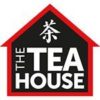The Moon Festival and Tea
Wednesday the 4th of October sees the Moon Festival celebrations begin. This historic Eastern festival has been celebrated for centuries and in our love for the culture where our beloved tea originates – we thought we’d tell you about it!
There are three fundamental ideas that the Moon Festival celebrates. They are gathering, thanksgiving and praying. Gathering represents family and friends coming together, it’s also said that the moon is the brightest and roundest on this day which means family reunion. Thanksgiving is stands for being thankful for the harvest or harmonious unions in life. The final idea is praying for the future, be that for yourself, loved ones or for any material hopes.
The Moon Festival goes by many names, the Mid-Autumn Festival, the Lantern Festival in Singapore and Malaysia, the Reunion Festival or the Children’s Festival in Vietnam. It is also known as the Mooncake Festival, because of the popular tradition of making, sharing and eating mooncakes.
Another important part of the Moon Festival is worshipping the moon.
In Chinese culture, a round shape symbolises completeness and reunion. The sharing and eating of round mooncakes among family members during the week of the festival signify the completeness and unity of families.
Mooncakes come in a variety of shapes and sizes. There are different types of crusts and fillings depending on each region’s culture. Fillings such as lotus seed paste, sweet bean paste, jujube paste and a combination of five types of nuts are most commonly used. The crusts of mooncakes vary from chewy to flaky.
Another important part of Mid-Autumn Festival is worshipping the moon. The ancient Chinese believed in rejuvenation being associated with the moon and water. The Zhuang people, for example, have an ancient fable saying the sun and moon are a couple and the stars are their children, and when the moon is pregnant, it becomes round, and then becomes crescent after giving birth to a child.
The festival was a time to enjoy the successful reaping of rice and wheat with food offerings made in honour of the moon. Offerings are also made to the lunar deity, Chang’e, known as the Moon Goddess of Immortality. Today it is still an occasion for outdoor reunions among family and friends with many cultural customs such as burning incense, performing dragon and lion dances and carrying brightly lit lanterns.
